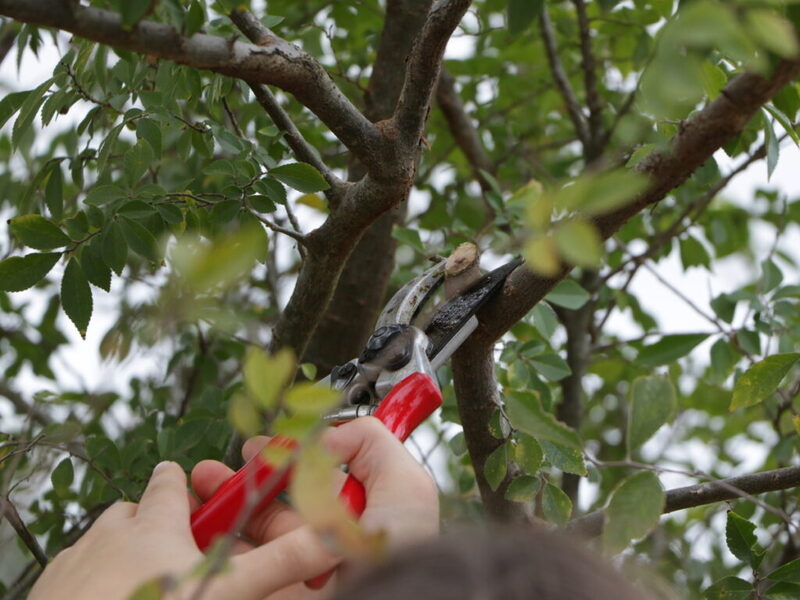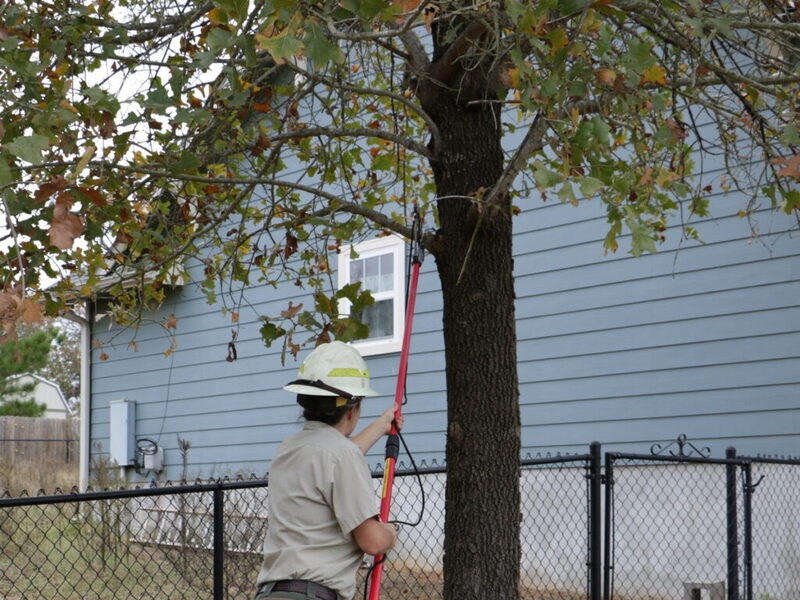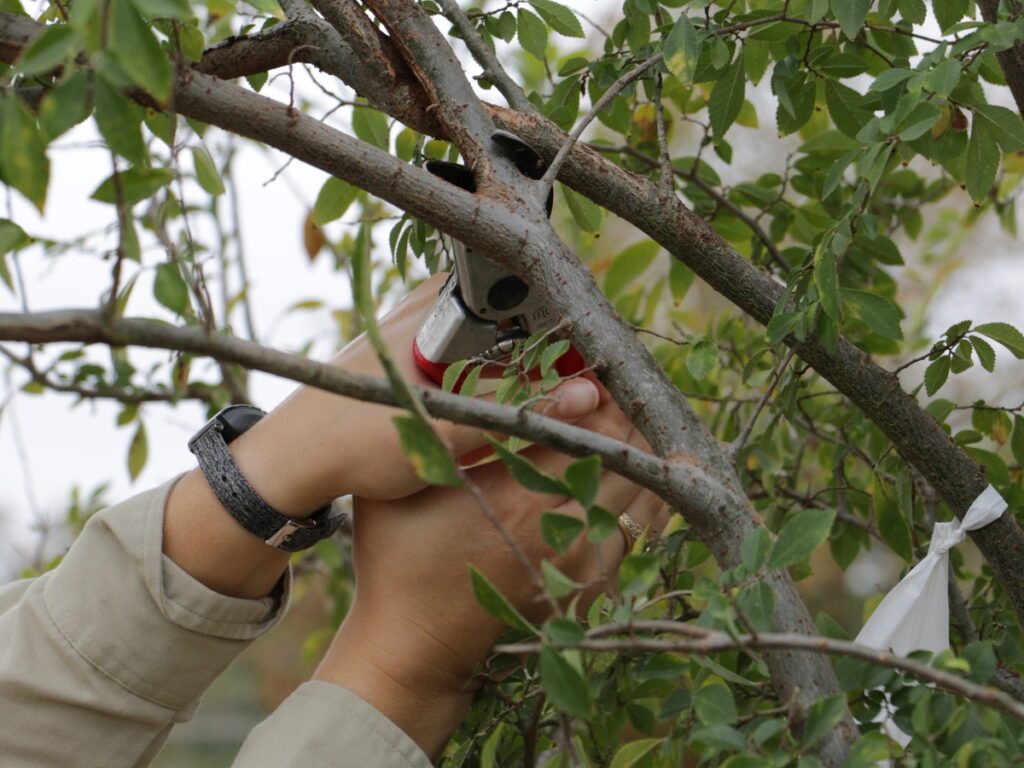Pruning young trees correctly is important for creating a strong structure and good form. Trees that are pruned properly when they are young will need less corrective pruning as they grow older.
Before you start pruning a young tree, remember these simple principles:
- Have a purpose: Know why you are making each cut. Every cut affects how the tree will grow.
- Avoid poor pruning: Bad pruning can damage the tree for its entire life. Learn the right techniques before you start.
- Understand how trees respond to wounds: Trees don’t heal like humans; they seal. Each pruning cut is considered a wound. When a tree is cut, it responds by growing over the wound and the wound is contained within the tree forever.
- Make small cuts: Smaller cuts are less harmful than larger ones. Fixing problems when the tree is young will help avoid big pruning jobs later.
Making the cut

The location of pruning cuts is important for a tree’s health and wound closure. Improper pruning cuts may lead to internal decay.
- To remove entire branches: Make cuts just outside the branch collar to avoid damaging the trunk. The branch collar is the swollen area beneath the branch where the trunk and branch wood meet. Avoid cutting into the branch collar or flush with the trunk. This is called a “flush cut” and is considered improper pruning.
- To remove part of a branch: If you need to shorten a branch or redirect its growth, cut it back to a secondary branch, also called a lateral branch. The lateral branch should be at least one-third the size of the branch you are removing. Cuts made between branches or back to a lateral that is too small may cause decay, unwanted new growth, or misdirected growth.
Pruning tools

Small branches can be easily cut with hand pruners. Scissor-type or bypass-blade pruning shears are preferred over anvil-type tools because they make cleaner cuts. Pruning shears or lopping shears should be used for branches that are less than one inch in diameter. For larger branches, a pruning saw should be used. Hedge shears are not suitable for shaping or pruning trees. It is important to keep all pruning tools clean and sharp.
Establishing a strong scaffold structure
A good structure of primary branches should be established while the tree is young. These main branches, known as scaffold branches, form the tree’s framework when it matures. Training young trees properly helps them develop a sturdy structure that needs less corrective pruning as they grow older.
The goal in training young trees is to create a strong, central trunk with well-spaced branches through pruning. This form mimics how trees grow in forests, where branches spread out less because of competition with other trees.
Trunk development
For most young trees, keep a single central leader growing upward. Do not cut back this leader or let secondary branches outgrow it.
Sometimes, trees develop two main stems, called codominant stems, which can weaken the tree’s structure. To fix this, remove or shorten one of the stems while the tree is young so that the central leader becomes dominant.
Secondary branches help the tree develop a strong, well-shaped trunk. It’s better to keep some of these branches, at least for a while, to help the trunk grow in diameter.
Permanent branch selection

Many branches on a young tree will be pruned away as it matures to allow space for mowing, pedestrians, and vehicles. The height of the lowest permanent branch depends on the tree’s role and location.
Ideally, the space between permanent branches should be about 3% of the tree’s future height. For example, if a tree is expected to grow to 50 feet tall, the space between branches should be about one and a half feet. It’s important to keep the branches balanced by having some branches in every direction.
The strength of a tree’s branches depends on their size and the angles where they attach. Branches that are about the same size as the trunk or limb they grow from are more likely to break than smaller branches.
Narrow angles where branches join the trunk can trap bark between them, which weakens the connection and can cause the branch to fail as the tree grows. It’s best to prune branches with weak attachments while they are still small.
How much to prune
When pruning, avoid removing too many branches. Leaves and their branches are important for making and storing food for the tree. Removing too much of the tree’s canopy can “starve” it, reduce its growth, and increase stress.
You should not remove more than 25% of the tree’s crown at one time.
Newly planted trees
For newly planted trees, only remove dead or broken branches. Wait until the second or third year to do any other pruning, once the tree has recovered from the stress of being planted.
Wound paint
Paint pruning cuts immediately on all oak trees to help prevent the spread of oak wilt. Paint or wound dressing is not necessary for pruning cuts on any other types of trees.

